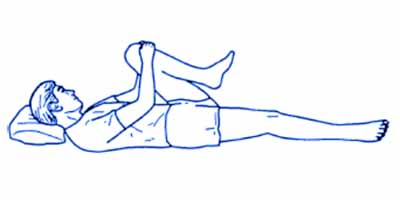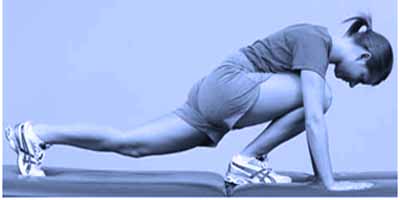Williams exercises, also known as Williams lumbar flexion exercises, are a series of therapeutic movements and stretches designed to alleviate lower back pain and improve spinal flexibility. Developed by Dr. Paul C. Williams, a physical therapist, these exercises aim to target specific muscles in the lumbar region while promoting proper spinal alignment. They have been widely used in the management and rehabilitation of lower back pain and are often recommended by healthcare professionals to help individuals regain mobility, strengthen their core, and find relief from discomfort in the lumbar area.

The mechanics of Williams exercises work by focusing on controlled lumbar flexion movements. These movements involve bending the spine forward while seated or lying on one’s back, targeting the lower back muscles and discs. The controlled flexion helps to stretch and elongate the spine, relieving pressure on the lumbar region and encouraging better circulation and fluid movement within the discs, which can reduce pain and improve overall mobility. Additionally, these exercises emphasize strengthening the core muscles, providing better support to the spine and promoting proper posture, further contributing to lower back pain relief and prevention.
It’s essential to consult with a healthcare provider or physical therapist to determine the most suitable exercises for your condition and create a personalized exercise plan.
I have summarized 7 variations of Williams exercises for you below:
Lie on your back, hands at side, knees bent, feet flat on the floor. Engage your abdominal muscles and gently tilt your pelvis backward, pressing your lower back into the floor. Wait 5 to 10 seconds. Pelvic tilt exercises strengthen the muscles that support your lower back.

Lie on your back on the floor. Slowly pull one knee and bring it towards your chest while keeping the other leg extended flat on the surface.and hold for 5-10 seconds. Lower your knee and repeat the same movement with the other knee. Remember to perform this exercise slowly and without any jerking movements to avoid straining your muscles or joints.

Lie on your back with your knees bent and feet flat on the floor. After pulling your right knee toward your chest, pull your left knee toward your chest and hold both knees for 5 to 10 seconds. Slowly lower one leg at a time. Stretching from knee to chest increases the flexibility of your lower back.

Perform a posterior pelvic tilt (exercise 1) and slowly lift your head and shoulders off the floor while holding this position. Wait a short while. Slowly return to the starting position.

Try to it up tall with your back straight and shoulders relaxed, with toes directed upwards and knees fully extended. Slowly lower the torso forward over the legs, extend the knees, extend the arms over the legs and focus the eyes forward. Reach your hands toward your toes, sliding them down your legs. Avoid rounding your back; instead, aim to hinge at the hips. You should feel a gentle stretching sensation along the back of your thighs (hamstrings). Do not force the stretch or bounce; instead, maintain a steady, controlled motion. Hamstring stretching increases the flexibility of the muscles in the back of your thighs.

Place one foot in front of the other with the left (front) knee bent and the right (back) knee kept rigidly straight. Flex forward from the body until the left knee touches the axillary crease (armpit area). Repeat with right leg forward and left leg back. The hip flexor muscles are located in the front of your hips. These muscles often shorten, especially if you sit a lot during the day. This exercise increases hip flexibility.

Stand with both feet parallel to each other at shoulder width. Try to keep the body as perpendicular to the ground as possible, focus the eyes forward and feet flat on the floor, and slowly lower your body (squat) by flexing your knees. Squat exercise strengthens the muscles in your hips. If you have difficulty with your balance, do this exercise near a solid wall.

